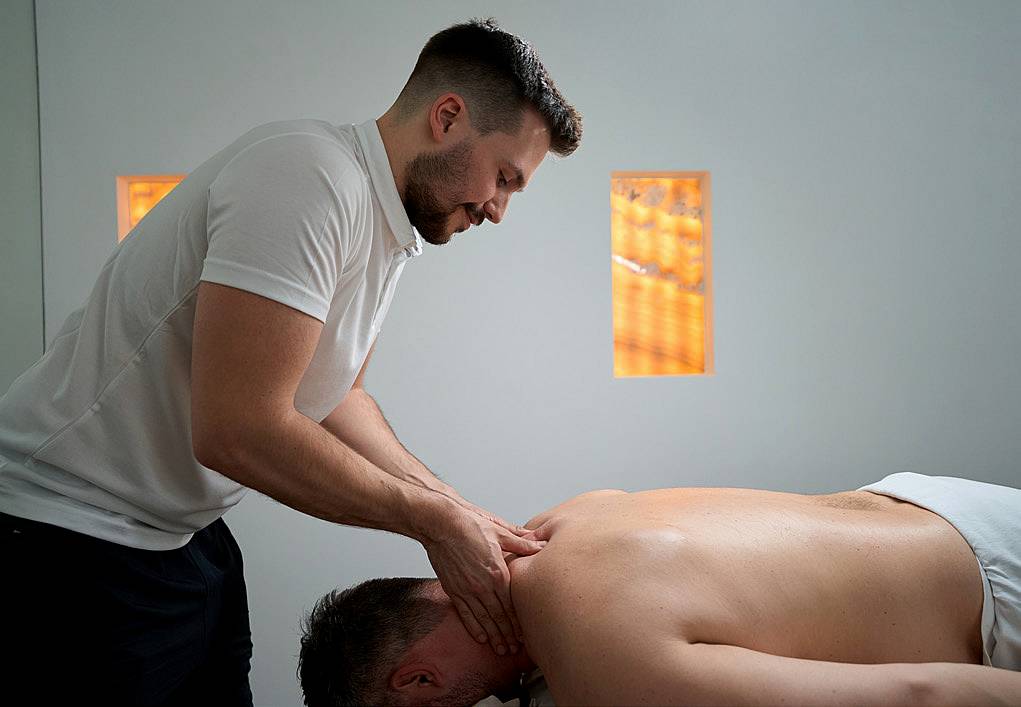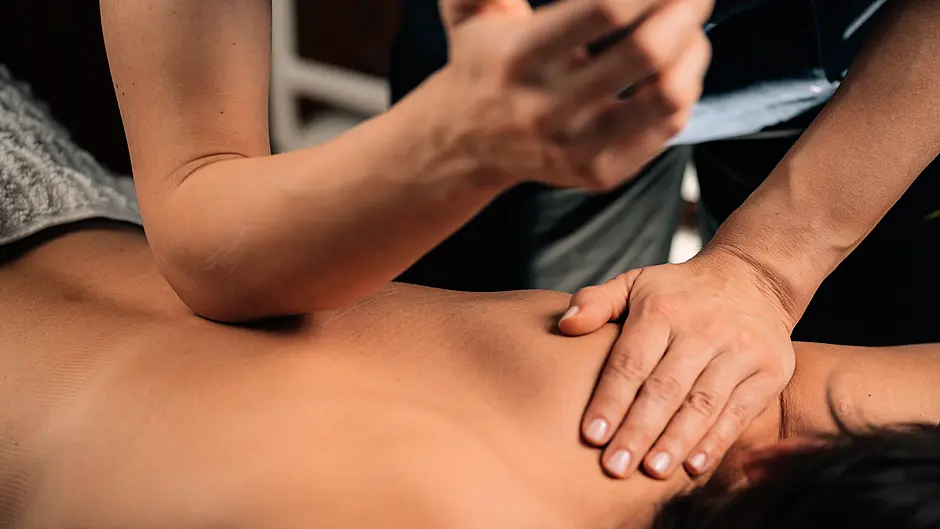Paula Burns talks to highly-regarded physiotherapist and West Cork man Thomas Dekkers about the benefits of massage therapy when it comes to leading an active lifestyle.
WE all know leading a more active lifestyle is good for your health. However, putting strain on muscles that haven’t been used in a while can leave us feeling a little sore. Most of us don’t need any excuses to ditch the gym or the five-a-side. Instead, we need something that will give us that incentive to keep on going.
While it’s not a miracle cure, incorporating an element of sports massage therapy to your exercise routine, could be exactly what you need to keep those muscles moving. Used by most professional athletes, if it’s good enough for them then it’s good enough for anyone simply looking to become more active in their everyday lives.
Thomas Dekkers a Consultant Musculoskeletal Physiotherapist at Bespoke Physiotherapy, where he incorporates sports massage therapy while working with elite athletes and the general public. ‘The research evidence shows that it has temporary benefits,’ explains Thomas, ‘I would be a proponent of it but I would use other techniques as well to get athletes better.’
The breakdown
So what exactly is sports massage therapy? Essentially, it’s a mix of three massage techniques that are designed to relieve stiffness and soreness in the muscles. These three main techniques are:
Myofascial release
This is when the therapist applies light pressure by hand to find myofascial areas (muscle and connective tissue) that feel stiff instead of being elastic and movable.
Deep tissue massage
This is when the physiotherapist will target chronic tension in muscles that lie deep within the body.
Trigger point therapy
This is when the therapist works to relieve pain by stretching the muscle and applying pressure to areas of tightness.

Through his experience, Thomas says that everyone can benefit in some way from all three.
‘I would use all three in one go. The deep tissue massage is for people who have a higher pain threshold and those along the more athletic spectrum.
‘Those who are higher-level athletes can generally tolerate deep tissue massage more and get more benefit from it. The myofascial release and trigger point techniques would be used more for most people.’
Although the main difference between the techniques is the intensity, trigger point therapy is perfect for those who find themselves in a knot. It is designed to speed up recovery from injury, correct muscular imbalances and relieve pain by stretching the muscle and then applying pressure to areas of muscle tightness or ‘knots’.
‘Sometimes people would have tight knots in muscles called trigger points and therapists would apply trigger point therapy to those individual spots.’ Thomas explains.
Benefits
While a pre or post-workout massage sounds like a lovely treat, is it really beneficial? Thomas explains that although the benefits are temporary, massage really can reduce stiffness and soreness for those partaking in exercise.
‘In the healthy population – those without injury – massage can certainly help to reduce any normal muscle stiffness or soreness that can be associated with training. People who are trying to get fit and their muscles feel a bit sore, these techniques can be used to help to reduce that soreness temporarily.’
Along with preparing the muscles for physical activity, sports massage therapy can also help you get a better night’s sleep, and anyone involved in exercise and fitness will tell you that good rest and recovery is essential to the whole process.
‘People go for massage from a relaxation point of view, post-exercise. They feel calmer for it, there may be benefit for sleep.’ says Thomas. ‘Some people may use massage before they go out for exercise. When we work with athletes, we would do a number of techniques before they go out to do exercise to warm up the muscles and improve blood flow to the muscles which effectively prepares them better to do physical activity.’
Injuries
When it comes to dealing with injuries, massage can be used as part of the rehabilitation programme.
‘Massage can be used to reduce pain, if you have a joint or a muscle injury. If you have a reduction in pain then you can start to see some post-treatment improvements in your range of motion and we would use that as part of a rehabilitation plan with exercise,’ explains Thomas. ‘With people who have just come out of a cast after a fracture or something like that, we might use a massage to improve blood flow to improve mobility.’
Unfortunately, sports massage therapy doesn’t prevent injury but it can be a helpful tool for preparing the muscles before exercising.
‘There is no evidence to say that massage prevents injury. I would look on the massage as a way to prepare people for exercise, so they feel better when they go out to do physical activity and I would look on it as a way to reduce any soreness after exercise but I don’t think we can say that it can prevent injury,’ Thomas explains.
 A foam roller can be very effective (especially for myofascial release therapy) and something which can be used at home, but it’s recommended to seek professional advice first on how to use one safely and effectively.
A foam roller can be very effective (especially for myofascial release therapy) and something which can be used at home, but it’s recommended to seek professional advice first on how to use one safely and effectively.
DIY
Incorporating sports massage into your workout routine doesn’t mean you always have the schedule appointments and spend lots of money. Thomas says that at the most basic level using a foam roller properly yourself can be very helpful before/after exercise, and then perhaps a couple of sessions a month with a professional would really help with any bigger issues you may be having.
His advice with regard to achieving and maintaining health and activity is that ‘the most benefit you are going to get is through diet, exercise and sleep. Massage may help them along and is a helpful tool as part of a healthy lifestyle.’

Thomas Dekkers MPhty MSc BSc (Hons) MISCP is a consultant musculoskeletal physiotherapist and certified strength & conditioning specialist working with Bespoke Physiotherapy in Cork (bespokephysio.ie). He has over 15 years of experience in musculoskeletal and sports medicine and has worked across multiple sectors, including the NHS, private practice, and professional sports. He practised on London’s Harley Street for a number of years as a spinal specialist physiotherapist. He has worked extensively with Olympic athletes at the English Institute of Sport and athletes from professional soccer, rugby, boxing, and inter-county GAA.








